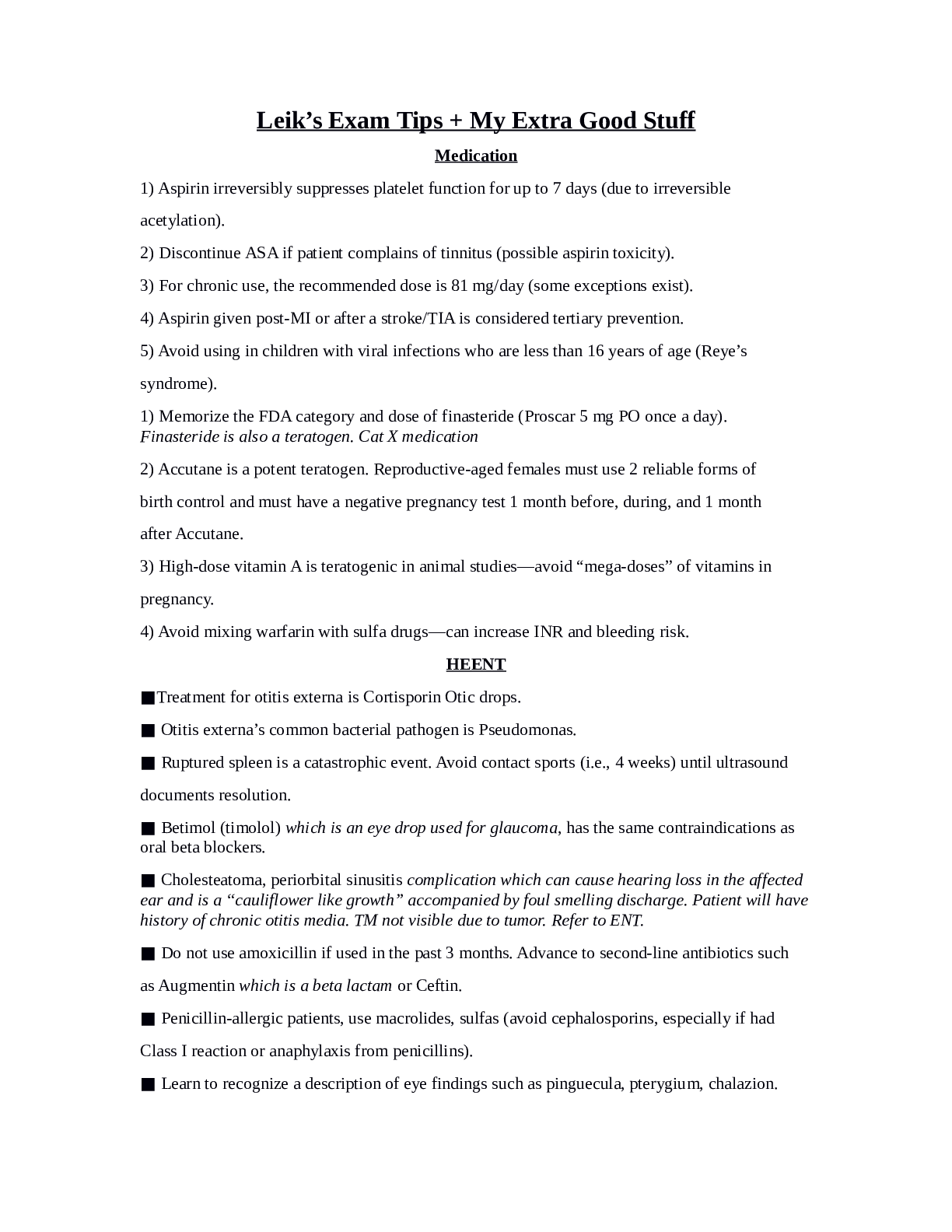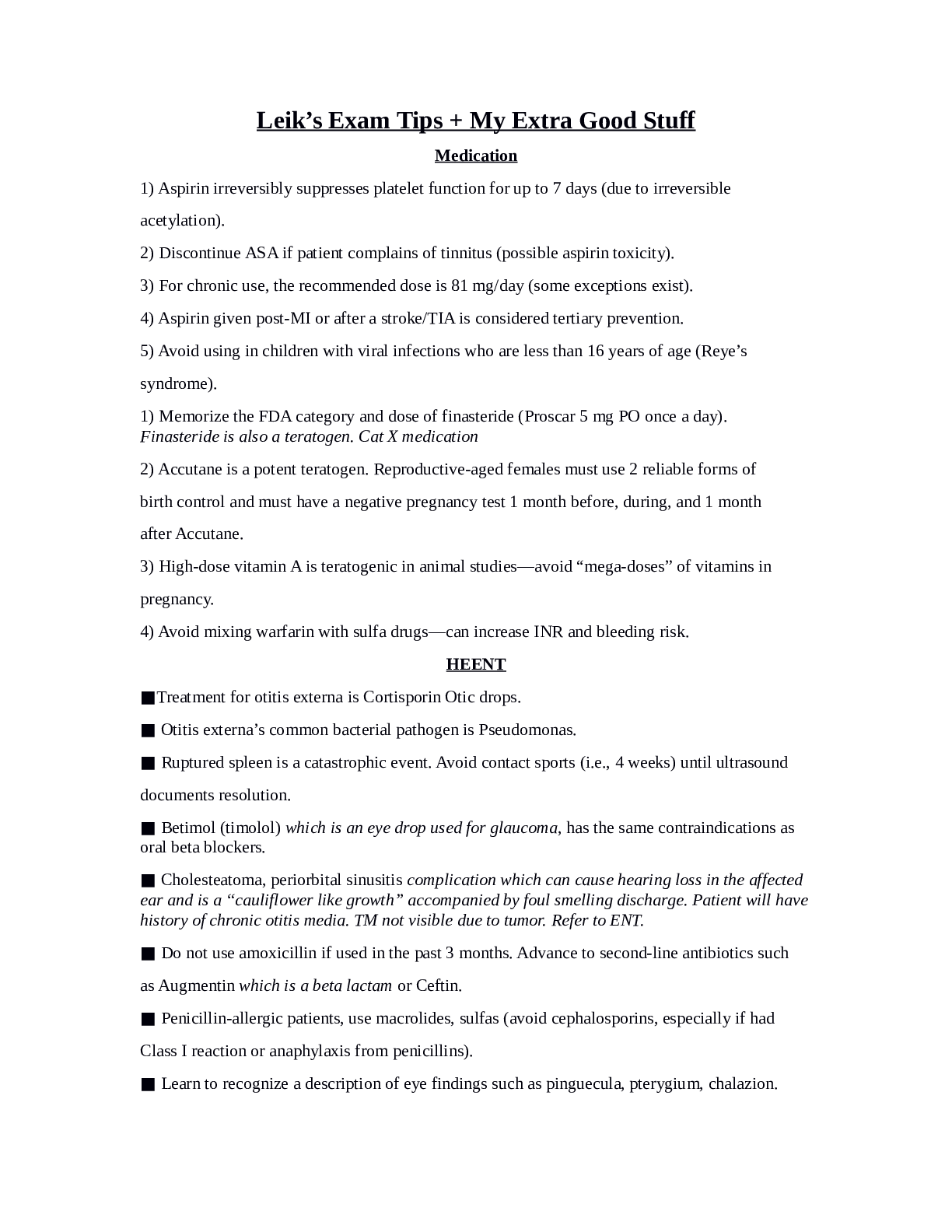Leik’s Exam Tips + My Extra Good Stuff
Course
Subject
Chemistry
Category
Questions and Answers
Pages
31
Uploaded By
ATIPROS
Preview 5 out of 31 Pages


Download all 31 pages for $ 9.00
Reviews (0)
$9.00
